Best Design Thinking Workshop Success Tips For You

“Design thinking workshop has more to do with problem-solving, less to do with the design.”

If you’re one of those who misunderstand Design thinking workshop with design, don’t be surprised— you’re not the only one.

Design thinking workshop has existed for centuries… and we are not aware of it.
John D. Rockefeller gave the whaling industry run for their money with his Standard Oil Kerosine…
When whalers celebrated businesses over corpses of whales to replenish their fuel reservoirs, the Rockefeller guy re-imagined the energy-consuming market.
When Rockefeller’s business turned into a freak of nature, Edison did to Rockefeller what Rockefeller did to the fishing & whaling units. The father of electricity went… for… the… kill!
Century after century, people have “design thought” to re-imagine the future.
It’s only now we have coined a fancy term for problem-solving… as “Design thinking workshop.”
If you’re looking for a layman’s definition, it will go as:
“When you focus on users, understand their pain areas, and apply solutions relatively on your products or services, then you are said to be Design thinking workshop.”
It’s like… you’re counting customer behavior into making your product or services viable for them.
It’s like… designing for them and not for you.
And it’s like… for every step you take; you’re not compromising with the human-centered core and customer experience (cx).
e-Commerce couldn’t escape Design thinking workshop either
If you have an online business, you have a worldly scope to serve.
Yes, you can serve millions of online customers daily… which leaves great scope for you.
But you also get an ultra-competitive environment that is far more radical than what the likes of Rockefellers and Edisons had!
Having said that, it is still not the biggest problem.
The biggest issue is when customers expect an engaging yet seamless buying experience on your channel.
Ask yourself: what did you do to solve their problems?
Your neighbor’s online store lets its users chat with a personalized help desk on the website. It’s a part of an interaction design.
The geeky Tom of your high school anticipates his customer’s needs and designs UI/UX accordingly. Not long ago, he reached the whopping 10% conversion rate.
Moreover, the friend who started online e-Commerce with you covers her customers on all the selling points seamlessly. There’s no stopping to her as she passes like a wind storm.
So are you doing enough to solve your customer’s problems?
Look! Everyone’s trying to understand customers and meet their expectations.
It’s impossible to fulfill them without diving into their pain points.
Most giant e-commerce companies go for a Design thinking workshop blitz.
These blitzes introduce seamlessness and higher engagement at the same time for the visitors.
Should you need better conversion and ROI?
It’s about time you use this systematic approach to learn about your customers and delight them in a better position.
Do they demand more immersive, intuitive interfaces with engaging and seamless shopping experiences?
Start with a bit of Design thinking workshop.
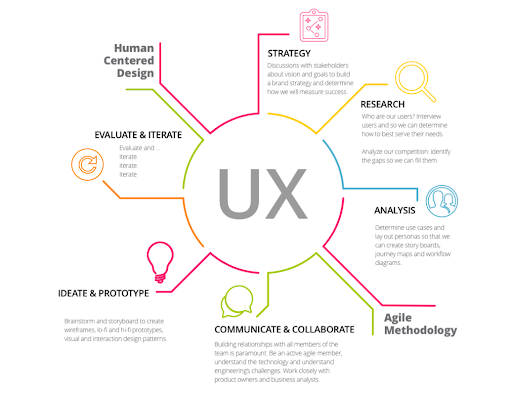
You can’t help it, really!
You, and I, and they; we all are experience driven.
Novelty effect captivates us. Fortunately, Design thinking workshop promises something novel every time customers visit your e-store.
Want to deliver rich novelty? Follow these six steps approaches.
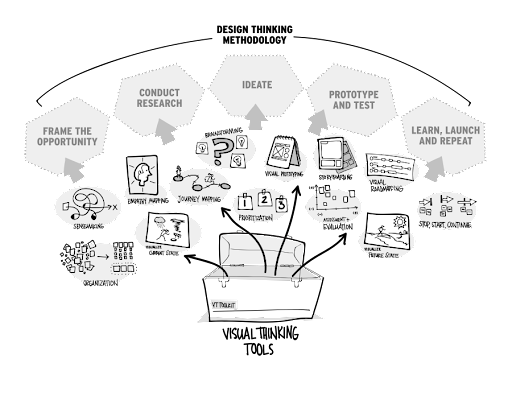
Step 1: Empathize with your users

- See their worlds
- Appreciate them as human beings
- Understand their feelings
- Communicate your understanding
You might argue the world is absolute, but customers don’t prefer businesses that talk in absolutes.
Volvo is the official intellectual owner of seat belts.
Did they talk in absolute? Did they prevent other car makers from not using the idea?
No! Instead, they let all the manufacturers use their idea for free.
It wasn’t possible without being empathetic towards their marketplace.

Similarly, your customers have specific wants when they’re shopping with your store.
The worst you can do is assume you know what they want without really getting into the studies and surveys.
So, begin with conducting research that gives insights on their behavior and interaction with the existing products/services.
Here’s another example.
The makers of electric stoves researched the drawbacks of coal cooking.
Most people inhaled huge amounts of carbon dioxide sitting right in front of the coal stove.
They thoroughly learned about the sufferings of the users and produced a safe alternative.
You have to apply the same principle to e-Commerce. Set a questionnaire, be it online or offline surveys and ask:
- What bothers them the most in e-Commerce?
- How’s their experience so far?
- How likely are they to buy online?
- What are the features they like?
- What annoys them the most?
- What are their expectations?
- When would they prefer online purchase over offline?
You’re ramming into all your customer’s problems and catering to the relative solutions.
Please remember.
“Customers buy with emotions and justify with logic.”
So if you’re empathizing with them (emotionally), you’re at least pushing them in the buying funnel seamlessly.
Google forms are one free tool for empathetic research. For advanced research and reporting, you can check GoSurvey.in

Step 2: Extract the needs from your research
Let’s say you ran empathy research on your targeted audience.
They’ve pushed all the details your way.
- Some don’t like shipping costs…
- Some hate the over-cluttered website…
- some look for frontend customization…
But it’s still not rich data.
The results you’re handling may be skewed (because of several factors).
“So it’s essential you separate the wheat from the chaff.”
You can either note down all the findings with the help of a research analyst or rely on advanced reporting tools that simplify your data collection process.
The idea is to draw a few conclusions.
You’re basically breaking down the problems and putting a plan forward to tackle them.
Again, your solutions should make users the central linchpin rather than the business.
For example, back in 2018, McDonald’s served 1.8 million plastic straws in their drinks.
Coincidentally, they conducted empathy research where most people wanted the giant food chain to discontinue using plastics.
So it responded by hearing their needs.
McD rolled out paper straws to ensure they heard their customer’s pain points.

Similarly, you have to look for the needs of your e-customers.
Collecting their needs is only half the job done.
The other half relies on how good you read their needs on their shopping journey.
- What do they need the most in their buying journey?
- Do they need to interact with live humans should there be any query?
- How is their experience so far?
Fortunately, if you’re using modern data collection tools such as Survey Monkey or GoSurvey, you can decode these needs with advanced reporting features.

Step 3: Brainstorm for creative ideas
Ideas are bulletproof!
Creative ideas are nuke-proof.
You’re eyeing exactly for these nuke-proof creative ideas in this particular step.
- Look into the needs you just got out of the reports…
- Lay it out in front of the team…
- THINK
- THINK
- And THINK

I believe the stage is more or less like the bridge between “thinking” and “happening.”
So you brainstorm for creative ideas.
You think until you have come up with a solution that fixes the identified problem in your research.
But please note, it’s the stage that comes most effective when everyone in your team, including yourself, pushes aside their egos and thinks for the customers.
You already know everyone’s trying to solve customer’s problems rather than satisfying the egos.

So remain super-open to the ideas without being too ideologically possessed.
Here’s a simple example for you.
Uber discovered the relationship between drivers and customers was not good in general taxi services.
There were cases of fraudulent and unwarranted behaviors, the credibility was missing entirely from the picture, and there was no incentive for good behavior.
So they brainstormed a power to give ratings for both drivers and customers.
It basically motivated the incentive for good behavior.
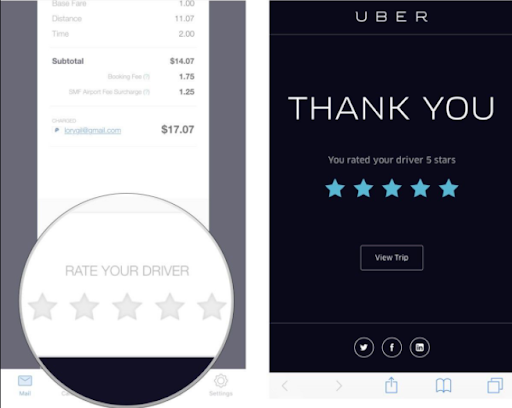
The call was simple: the better you behave, the more customers you get and earn!
The idea was groundbreaking yet straightforward in the world of on-demand services.
Have a similar approach for your e-Commerce. Instead of appealing to the masses, go for niches and brainstorm laser-targeted ideas that convert and sell.
Step 4: Translate ideas into action with a prototype
Well, it’s time to act.
To bring creative ideas into reality!

You’re translating your research, planning, and ideas into a condensed prototype.
Think of it as an experimental model where you’re testing or validating your ideas.
Not all ideas or design assumptions work. They might sound great in meetings.
But you want to roll out its conceptualization internally within a small group of users.
This checks:
- Whether you need refinements moving forward.
- How well the product/service fares within the testing team.
- Whether the design assumption is correct.
- If the proposed solution needs changes.
All in all, it’s a process of collecting feedback before you’ve gone live. Or, in simpler terms, you can call it an iterative design process.
Design thinking workshop is all about pushing the limits even when you’ve come up with the best ideas.
After all, Prototype testing is iteration after iteration that measures the water of your creativity.
You might say they slow you down.
But prototyping slows you down to speed you up in the future.
You can either go for
- Low-fidelity prototyping
- High-fidelity prototyping
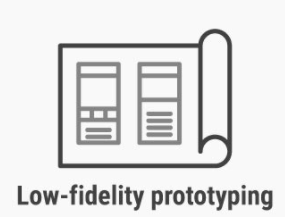
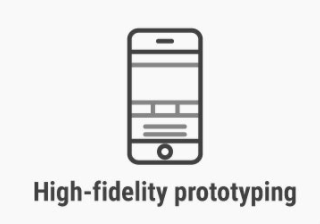
For your e-Commerce, a prototype can either be a clickable HTML or paper sketch.
And yes, you don’t have to finish the product for the prototyping stage.
You can conduct the prototyping test at what developers call the minimum viable product.

Step 5: Test your solutions
Now it’s time to go back to your test audience— yes, the same audience that helped you identify the problems.

Why? Because this you want to announce you’ve something for them to cheer about.
- You want to be learning about their reactions.
- Do you want to ask if your solution solves their problems?
- If it does, why?
- If it doesn’t, why?
- Is it really an invention, or does it look like an invention to you, but it isn’t?
As with the first stage, you’re again interacting with the users.
Don’t be surprised and sad if you learn more about them and their needs again.
It’s an opportunity to refine rather than retreat.
Look! The entire crux of testing your model is to give you fresh refining ideas on your prototypes.
In some cases, the testing stage might even reveal a different problem statement.
So it’s more of audience feedback than criticism.
Apple tests its products hundreds of times before rolling out the final version.
So don’t shy away from testing your e-Commerce at least twice.
The testing phase can be a bit demotivating because you’ve traveled a long way, and you want to go live as quickly as you can.
But a little wait will give you a tremendous head start of months against your competitors.
Step 6: See the good, the bad, and the ugly of your website with the implementation
As easy as it may sound, the final stage needs the most courage.
Because you’ll always feel dicey before going live.
After all, you’ve put so much brain into research, ideating, and testing.
Now it’s about time you deploy the product/service.
The distance between success and failure is one step far from the deployment.
No matter how good you’ve prototyped and tested, it’s after deployment you realize the good, the bad, and the ugly of the e-Commerce implementation.,/p>
Let’s say the implementation didn’t work out for you. It doesn’t mean the end of the planet for you.
You still have opportunities to make changes and evolve.
Design thinking workshop is all about changing customer’s behavior.
It’s possible you collected their behaviors a year ago, and everything changed by the time you reached the implementation stage.
That’s when you’ve to use agile process implementation rather than the waterfall model.
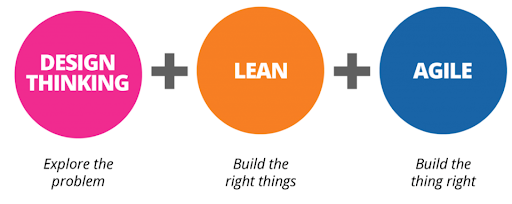
It saves you time and unnecessary changes during the last minutes.
To a successful agile implementation, you should:
- Don’t economize on internal training.
- Focus on proper onboarding.
- Know when agile is not your cup of tea.
- Stress on “what” rather than “how.”
Here’s another example for you.
You won’t believe Airbnb made less than 200$ per week once. So what changed suddenly?
How did they turn into a billion dollars company?
You guessed it right! “THE PICTURES LOOKED TERRIBLE.”

People didn’t want to stay in those dark, murky, dirty places (at least that was perceived from the images).
So a bit of experimentation and thinking beyond the sphere changed it all for Airbnb.
But this is not the end… my friend. You can make your e-Commerce more humane.
You can make your e-store more human-friendly if you answer these questions:
- Are you looking closely at customer experiences? Each experience adds to the successful fabric of e-Commerce Design thinking workshop.
- How fast are you learning their experiences and reacting? Of course, you need not be impulsive, but you need not be procrastinating either.
- Whether you’re building a relationship with e-Commerce visitors, are you sending personalized emails and messages? How is the emotional connection with them?
- What are the things you try in actual stores replicate in e-Commerce? Is there an upload trial image feature? Do they have an immersive experience as they have in stores?

What you learned about Design thinking workshop…
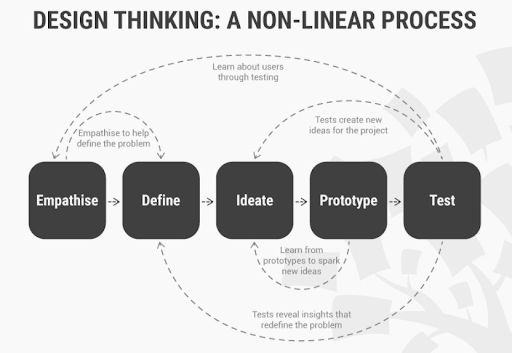
You learned… Design thinking workshop is a user-centric problem-solving approach rather than a business-centric.
You learned… Design thinking workshop is much more than simply designing a website.
You learned… the six stages of Design thinking workshop: empathize, need, brainstorm, prototype, test, and implement.
You learned… the real-world use cases of Design thinking workshop.
You learned… Design thinking workshop is stepping into your customer’s boot rather than serving what you assume right.
For more such blogs, keep reading aureatelabs.com. We have a team of experts who can help you design the best website outlay; check out our conversion-focused design services.
Image Credit: Web






Post a Comment
Got a question? Have a feedback? Please feel free to leave your ideas, opinions, and questions in the comments section of our post! ❤️